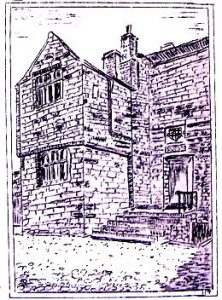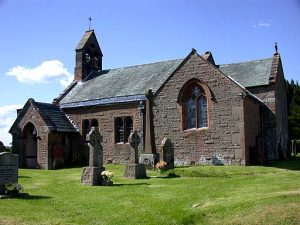Our understanding of our lineage has evolved over time. Previously, our earliest known ancestor was Joshua, who lived approximately from 1758 to 1799. However, recent advancements in DNA research conducted in conjunction with The National Society of the Claiborne Family Descendants and Family Tree DNA have allowed us to trace our roots back even further.
Westmorland Roots
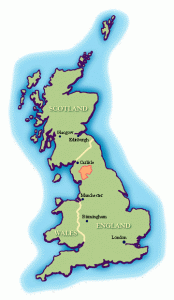
Our family’s roots trace back to the historic Westmorland County in northern Eng-land, now part of Cumbria. This “ancient and knightly family” took its name from the manor of Cliburn, which they held for nearly four centuries, from the early 1200s to the mid-1600s.1Howell Purdue and Elizabeth Purdue, Pat Cleburne Confederate General (Hillsboro, Texas: Hill Jr. College Press, 1973), 1. Today, Cliburn Hall still stands near the small village of Cliburn, about six miles south-east of Penrith, overlooking the Leith River from an elevated position.
The grand stone structure, featuring a three-story pele tower, was built in the 1300s by Robert de Cliburn, a knight of the shire for Westmorland. Two centuries later, Rich-ard Cleburne expanded and modified the original estate. In the Tudor era, the property boasted a large deer park, pleasure grounds, and terraced walks. Across the road from Cliburn Hall lies the Parish Church of Cliburn, a Norman structure dating back to the 1100s.
The Cliburn family’s founder, Hervey de Cliburn—whose name translates to “stream by the bank”—and his descendants held the manor by “knight service.” In the early 1600s, near the time of England’s reconquest of Ireland, William Cleburne, the second son of Thomas, the fourteenth Lord of Cliburn, relocated to Moate, Westmeath, Ireland. His son John was born there in 1623. Although other family members had already settled in Ireland, it was William who acquired castles, towns, and lands, establishing a Cliburn presence in both Westmorland and Ireland.
DNA studies confirm our family’s origins in the Westmorland region, though the path leading some members to southeastern England, particularly Monken Hadley, remains somewhat unclear. Researchers from the National Society of Claiborne Family Descend-ants propose a link through Sir John Cliburne (1439–1489), the son of Roland de Cliburn and Katherine de Lancaster. Monken Hadley is near Barnet, where a significant battle took place during the Wars of the Roses on April 14, 1471. Historical records and rolls of arms document Sir John’s presence at the Battle of Barnet, where the King’s army camped for several weeks. Nine months later, in January 1472, our earliest known ancestor, Oli-ver, is believed to have been born.2There is a strong tradition that Sir John Cliburne fought at the Battle of Barnet. In addition, there is a 1469 indenture of Sir John Cliburne to Thomas Sandforth, who became a Yorkist.
English Ancestors
Oliver Clyborn, born around 1472 in Monken Hadley, lived there until his death before 1532. Court records confirm his residence in Monken Hadley and identify him as the father of Thomas. Oliver married Isabella, who had a son from a previous marriage. Although Oliver had a son named Thomas, it is uncertain whether Isabella was his mother.
Thomas Clybborne, born around 1505 to Oliver in Monken Hadley, married Joan around 1526. They had at least two sons, and Thomas was buried on October 10, 1558, in South Mimms.
William Clybborne was born in 1527 to Thomas Clybborne and Joane in Monken Hadley, a quaint town situated four miles southeast of South Mimms. In 1550, he married Ellen in South Mimms, and they had one daughter and four sons. William passed away and was interred on 13 January 1584 in St. Giles, South Mimms.
James Cleburne, the youngest son of William and Ellen, was born in May 1565 in South Mimms, Hertford-shire, and baptized there on 10 May 1565. The town, located about ten miles west of Waltham Cross, holds significance for the family, as the Isom branch of the Cleburne descendants also resided there. James worked as a bargeman, ferrying cargo along the River Lea, which stretches approximately 25 miles from the River Thames in London to the town of Ware before turning west to Hertford.
Around 1585, James entered into a relationship with Apollonya Isham, and they lived together for a time. However, their relationship ended by 1590, and James married Agnes Jurye in Waltham Abbey. It appears that Apollonya’s family disapproved of the match and arranged for her to marry Robert Lee in 1587. Their son, born during the rela-tionship, was likely sent to live with members of the Isham family in London. The Isham family owned prominent businesses in London and the manor of Dancers Hill, at the southern edge of South Mimms, where Apollonya may have lived when she met James.
In 1625, James and Agnes both died during a Yersinia pestis plague outbreak that claimed 40,000 lives in London. At the time, James was around 60, and Agnes was 55. Following James’s death, his youngest sons, Thomas and Edward, were named executors of his will. Edward, born in 1614, was only 11 years old, while Thomas was 19. The pro-bate clerk relied on Thomas to administer the estate, given Edward’s age. The will allo-cated 20 shillings each to the older siblings—Elizabeth (30), James (27), William (24), and Rychard (21)—but made no explicit provision for Edward and Thomas, suggesting they had some discretion over the estate’s remaining assets.
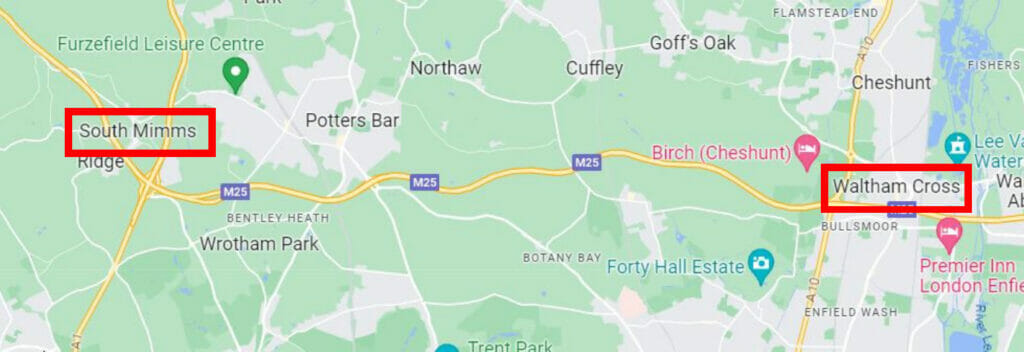
Edward Cleiborne, born in 1614, was the son of James Cleborn and Agnes Jurye. His baptism took place on 22 May 1614 in Waltham Abbey. Church records in Essex, England, spell the surname as Cleyborne; licenses to pass the seas use Cleiborne; and Barbados church records use Cleaborne..
James, Edward’s father, passed away in Waltham Cross, Hertfordshire, England, and was buried on 11 October 1625. At the time, Edward was 11 years old and his brother, Thomas, was 19. Both were named as executors of their father’s will. However, the probate clerk leaned on Thomas to execute the will, citing Edward’s minority. The will allocated 20 shillings each to the older siblings – Elizabeth (30 and married), James (27), William (24), and Rychard (21). It did not explicitly provide for Edward and Thomas, but as executors, they might have had some discretion to distribute any remaining property after the older siblings received their 80 shillings.
Edward, the youngest in the family, was born when his father was 50 and his mother was 44. By modern standards, his parents were old, but for that era, they were particularly so. Agnes had already passed away by the time James died in 1625.
Following the death of both parents, Edward likely moved in with his brother James. He also remained close with his older half-brother, William Isome, who resided just a mile away in nearby Cheshunt.
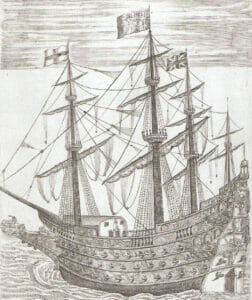
A decade after James’ death, on 7 August 1635, 21-year-old Edward Cleborne and his 14-year-old nephew, Robert Isome, sailed on the Globe to Henrico, Virginia, in search of new opportunities. The shipmaster, Jeremy Blackman, was a friend and business partner of Edward’s. Also aboard the Globe was John Goodbarne, a devout Christian minister who passed away during the voyage to Virginia, leaving behind a library of Gospel texts.
In 1636, William Julian, Edward’s sponsor in Virginia, received a “headright” land grant in Bermuda Hundred for providing him with employment and lodging. Fourteen years later, on 18 June 1650, another grant was recorded for Edward’s Virginia sponsor, ship captain William Shipp, who used Edward’s headrights to acquire land. Around 1649, Ed-ward may have returned to England to marry a woman named Mary before going back to Virginia. The couple had at least two sons, including John, born around 1650, who would later marry Mary Sheppey in 1680.
Edward became involved in Barbados’ burgeoning sugar industry. His friend Jere-my Blackman had family ties to the island through his brothers-in-law Jan and Michael Lucie, Dutch plantation owners there. Both Edward and his wife died in Barbados in 1662; Edward was buried on 15 September at the age of 48, in St. Michael.
Edward Cleborne is an ancestor of the modern Claybourn family and the great-grandfather of John Cleburne of “Dale Parish,” who left a large legacy in Virginia and across North America. Meanwhile, his nephew Robert Isome returned to England, possi-bly on a voyage taken by Edward, and chose to stay. Robert married Jane Clubber in 1643 in Green’s Norton, Northamptonshire, and started a family there. Y-DNA tests to-day show a close relationship between the male-line descendants of Edward Cleborne and Robert Isome.
There remains a gap in the documented lineage, but the next known ancestor is Joshua Clyburn, suggesting further research is needed to bridge the connection.
Footnotes
- 1Howell Purdue and Elizabeth Purdue, Pat Cleburne Confederate General (Hillsboro, Texas: Hill Jr. College Press, 1973), 1.
- 2There is a strong tradition that Sir John Cliburne fought at the Battle of Barnet. In addition, there is a 1469 indenture of Sir John Cliburne to Thomas Sandforth, who became a Yorkist.


